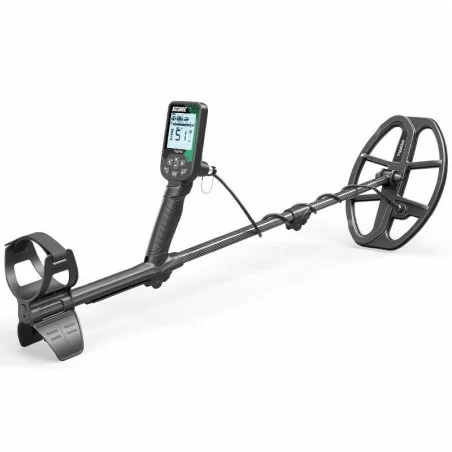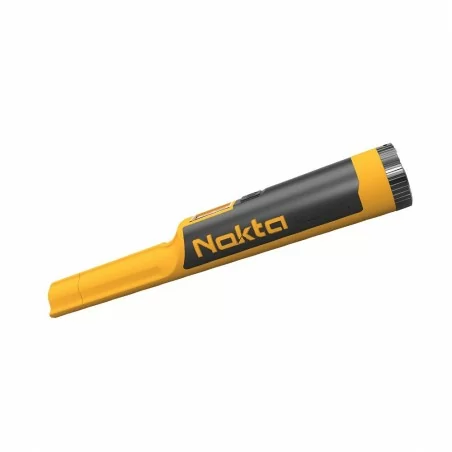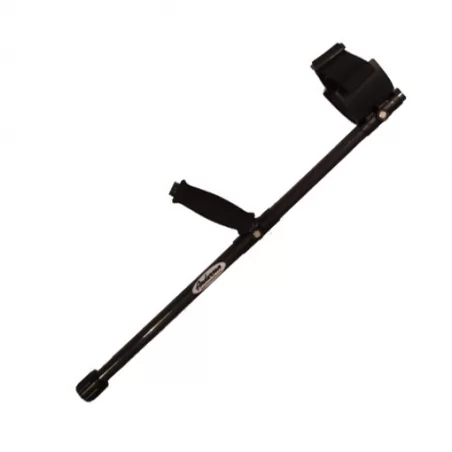Are you beginners who have recently discovered metal detecting?
Here's the section for you!
It's called The ABC of metal detecting and will be curated, through some videos on our YouTube channel, by our super expert Leonardo Ciocca.
Designed and created for newcomers to the subject, the section will explain, in simple and direct language, the fundamental concepts of this discipline, starting from its "jargon", or rather from the terms most used by the most experienced researchers.
After all, acronyms like "VLF, VDI, BBS, DD..." or expressions like "Turn On and Go", "All Metal", "Target", "No Motion" or "Recovery Speed" can be incomprehensible to those who are not familiar with this world.
In this 1st episode, we have therefore decided to create a sort of Video Dictionary to explain common terms and also translate them into English, the most popular language for those who practice this discipline.
.
Accendi e Vai / Turn and Go
Let's start with the letter "A" with the expression... "Accendi e Vai" or "Turn On and Go". It's a type of metal detector with basic functionalities whose "setup" requires very few steps. They are "entry-level" devices suitable for beginners, or for those approaching metal detecting without any experience and therefore could never navigate through the sophisticated functions of too complex machines.
For this reason, some manufacturers have decided to produce metal detectors with very few settings to allow inexperienced researchers to obtain results immediately and effortlessly. Once, they were machines with limited performance, but today the gap with top models is gradually narrowing.
All Metal Search Model
And let's move on to the second expression: All Metal. It is a search mode, selectable in devices that include it, which allows detecting every type of metal, without any exclusion. The machine is therefore able to detect metallic objects of every type:
- iron
- nickel
- steel
- aluminum
- lead
- brass
- bronze
- copper
- silver
- all other metals and alloys.
After the introduction of the "Discrimination" function, what sense does it make today to use an "All Metal" mode? The reason is very simple: not having too many filters, this setting will allow you to reach the deepest depths (the only "side effect", expect mountains of trash during your digs).
All Terrain
With this expression, in fact, all models of metal detectors that can be used both on land and at sea are indicated, even in complete immersion, although at limited depths (normally within the first 3-5 meters). These are usually robust machines, capable of working in the most extreme conditions. The number of "All Terrain" models on the market is growing exponentially.
Alone / "Halo"
And now a term that is still much discussed: Alone (usually used in the expression "ALONE Effect" or, in English, "Halo Effect").
According to some, it represents the signal amplification effect due to the creation of a "halo" of oxidation that surrounds a buried object. Over time, in fact, many objects release into the surrounding soil a certain amount of metal oxide particles that create a sort of "aura" all around. This "halo", in theory, should be detectable by the metal detector, making it easier to find the object that produced it.
However, it must be said that, to date, engineers specialized in the construction of metal detectors still doubt the real consistency of this phenomenon. According to many, in fact, the amount of oxidation produced is substantially negligible and the improvement in detection is at least doubtful.
Altoparlante / Integrated Speaker
And now a very simple term... Altoparlante or Speaker (also called "Cassa").
Practically all metal detectors on the market indicate the detection of metallic objects with an acoustic signal. In order to make this sound audible to the searcher, the detector usually incorporates a small "speaker" capable of reproducing this sound.
Most of the time, in addition to the speaker, it will be possible to connect wired headphones (which usually exclude the speaker) or, in newer models, wireless headphones.
Anderson
And now a term that takes the name of a company, but now indicates a type of product: Anderson.
Almost all metal detectors on the market, in their mechanical structure, include the so-called "shafts" (in English the term "Stem" or "Rod" is also used), essentially tubular connections made of various materials, from aluminum to polymers to carbon fiber, which allow the user to move the metal detector during searches.
The shape of these shafts can be different: there are "S" shafts that, for many years, have been the most popular. And then there are the "Anderson Shafts", devised precisely by the Canadian company of the same name, which for this innovation has become very popular worldwide.
Anderson shafts have a straight configuration, without curves, and the handle is placed in an almost orthogonal position (at 90°) with respect to the shafts. This particular configuration, according to many, allows for better weight distribution of the metal detector, less fatigue, and greater precision during movements, especially when using detectors immersed in water.
Usually, the shaft system is composed of multiple segments. To be exact, at least 2, but most of the time there are 3.
- Upper Shaft, on which the handle is located, the control "brain" of the detector and where we usually rest our forearm.
- Middle Shaft, which acts as a connector.
- Lower Shaft, the last stretch of the shaft system connected to the so-called "search coil", essentially to what we can imagine as the transmitting and receiving antenna of our detector.
There are various systems to connect the various shaft segments and especially to adjust the overall length according to our height.
One of the most practical is precisely that of Collapsible Shafts, whose segments slide into each other before being locked in the most comfortable position. The main advantage of the collapsible system is that it allows significantly reducing the length of the metal detector when not in use and we simply want to transport it in a bag or backpack.
Autonomia / Battery Life
And now the last term of this episode... Autonomia ("Battery Life"), the term used to indicate the average duration of the metal detector batteries when fully charged. Normally it is indicated in hours of use and usually ranges from about 5 hours to over 40... depending on the detector models and how they are used.
The battery life is influenced by many factors. Firstly, by the type of batteries: Alkaline batteries are certainly among those with the longest duration but, once depleted, we will have no way to reuse them unless we use special chargers.
Then there are rechargeable batteries:
- Nickel Cadmium
- Nickel Metal Hydride
- Lithium Ions
- Lithium Polymers.
Nickel batteries generally have a shorter autonomy than Alkaline ones, but they can be easily recharged and reused.
Lithium batteries (polymers or ions) have excellent performance in terms of autonomy and constant current delivery and also lightweight, but they are the most expensive.
The autonomy of a detector is then influenced by many other factors, such as whether or not to use the integrated speaker or headphones, the backlight of the display but above all by the operating frequency of the detector.
Watch the video...
Universal carbon fiber shaft for all metal detectors Nokta Score
Nokta AccuPOINT
Universal Shaft
Detectorshop Green T-Shirt




